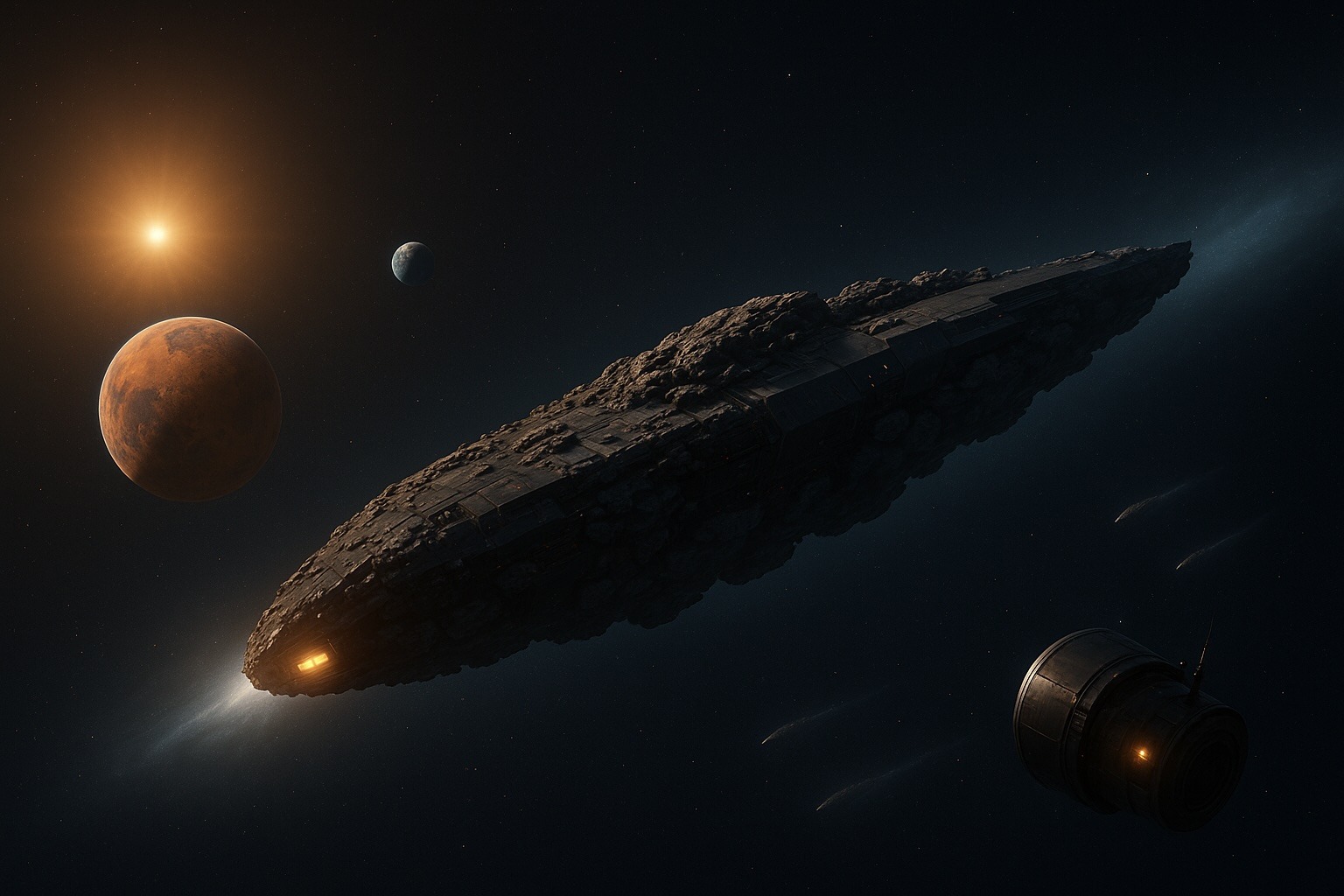
If Earth had a doorbell, it just rang. Quietly. From 269 million kilometres away.
Meet 3I/ATLAS, our third confirmed interstellar visitor after ‘Oumuamua and 2I/Borisov. It slipped into our Solar System this summer, not so much arriving as intruding,a cold relic from another star system that wandered too close to the neighbourhood and is now being interrogated by every telescope we have.
Unlike its mysterious, cigar-shaped predecessor, 3I/ATLAS came in hot and obvious, flaring with a carbon dioxide-rich coma so large it could swallow Earth several times over. NASA’s MAVEN and ExoMars missions even turned their cameras toward it as it passed Mars in early October. It’s the kind of coordination that makes humanity look impressively capable,when it’s something we can’t blow up.
The comet’s origin is confirmed as interstellar thanks to its hyperbolic trajectory. It’s moving too fast to be bound by the Sun’s gravity and will leave us forever once it slingshots out again in 2026. If modelling is right, the object is older than our Solar System, possibly formed over seven billion years ago in the Milky Way’s thick disk,a dusty, ancient region of stars that predates us by aeons. So yes, it’s literally from an older galaxy generation.
3I/ATLAS also happens to be chemically bizarre. It’s leaking carbon dioxide eight times faster than water, a ratio that would make even the most indulgent cola addict proud. Observations from JWST found a vast plume of CO₂ gas extending nearly 350,000 kilometres,an absurd amount of activity for a body barely a few kilometres across. It’s not behaving like any Solar System comet we know. There’s even cyanide in the mix, because apparently space chemistry doesn’t care about PR optics.
Then there’s the strange case of its nickel. Astronomers detected nickel vapour without iron, which should be impossible unless your day job involves refining alloys in a supernova. One plausible explanation is the sublimation of nickel carbonyl,the same compound used in industrial metal purification. The result is that, to human eyes, the comet’s chemical signature looks a bit too much like something we’d make in a factory.
Cue Avi Loeb, Harvard’s favourite astrophysicist provocateur, who suggested 3I/ATLAS might be a piece of alien technology,a “black swan” event, potentially executing a deliberate trajectory through the inner Solar System. His theory drew on its unusual orbit, its missing non-gravitational acceleration, and that suspicious nickel. Loeb even gave it odds: roughly a thirty percent chance it’s not natural. Which is either bold, or a great way to guarantee a book deal.
NASA and the rest of the astrophysics community have politely disagreed. The scientific consensus is that it’s a comet doing comet things,just in a way that makes us question what “normal” even means. The missing acceleration, for instance, could be down to its jets firing symmetrically, cancelling out thrust. No UFOs required. Still, that hasn’t stopped Reddit from entering DEFCON 2.
What makes 3I/ATLAS genuinely fascinating isn’t the alien chatter but the scientific nuisance it presents. Each interstellar object so far,rocky ‘Oumuamua, CO-rich Borisov, and now CO₂-rich ATLAS,has turned out to be chemically unique. If you’re looking for a universal recipe for planets, you won’t find one. The Milky Way seems to prefer improvisation.
ATLAS’s closest approach to Earth in December will still leave it almost two hundred and seventy million kilometres away, but we’ll be watching like paranoid neighbours anyway. It’s a scientific gift: a snapshot of a world that no longer exists, from a star that may have burned out before the dinosaurs walked the Earth.
The arrival of 3I/ATLAS also raises an uncomfortable question: how many more are coming? Astronomers have long suspected that interstellar visitors aren’t rare at all we just haven’t been paying enough attention. If three have shown up in less than a decade, the odds suggest a steady stream passing unnoticed. Some may be smaller, darker, or faster, slipping by our instruments entirely. It’s possible 3I/ATLAS isn’t an outlier, but part of a quiet migration we’re only beginning to notice.
So is it alien? Probably not. But like any good houseguest, it’s polite enough to leave us with questions before it vanishes forever. And if it does turn out to be something more,well, at least we saw this one coming.